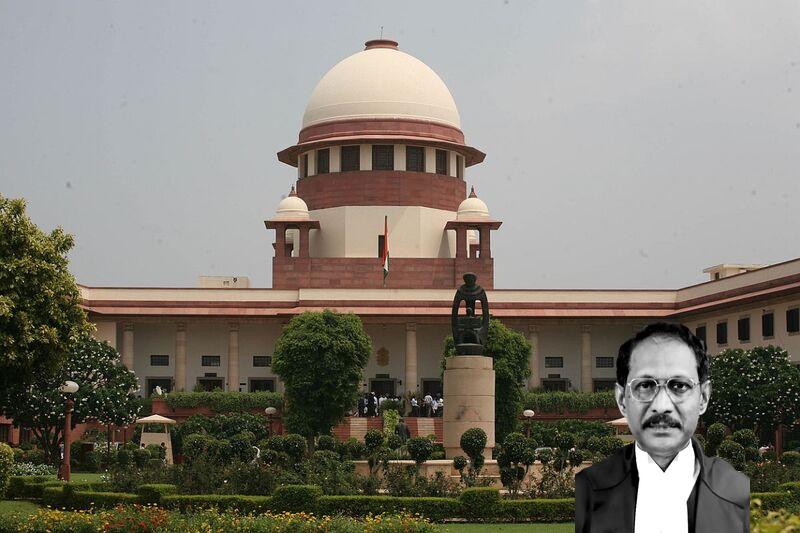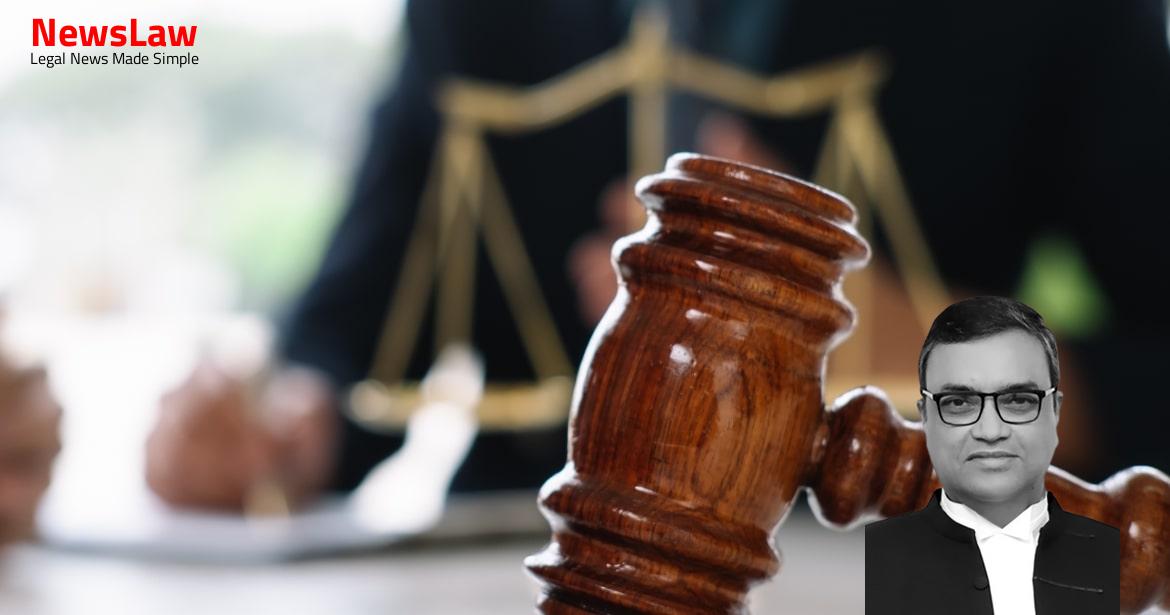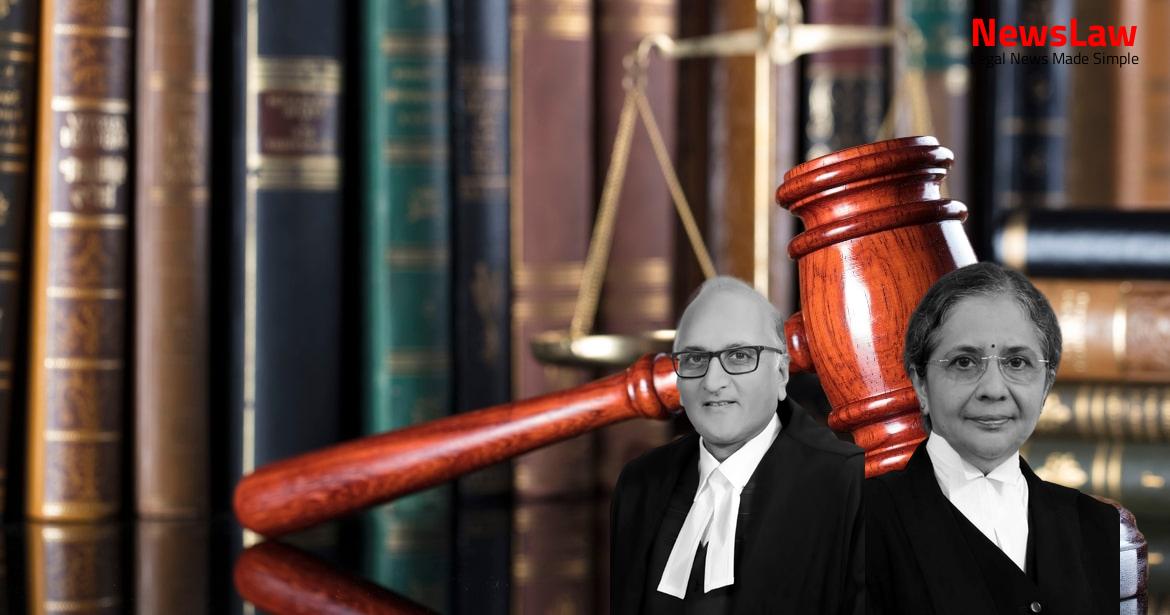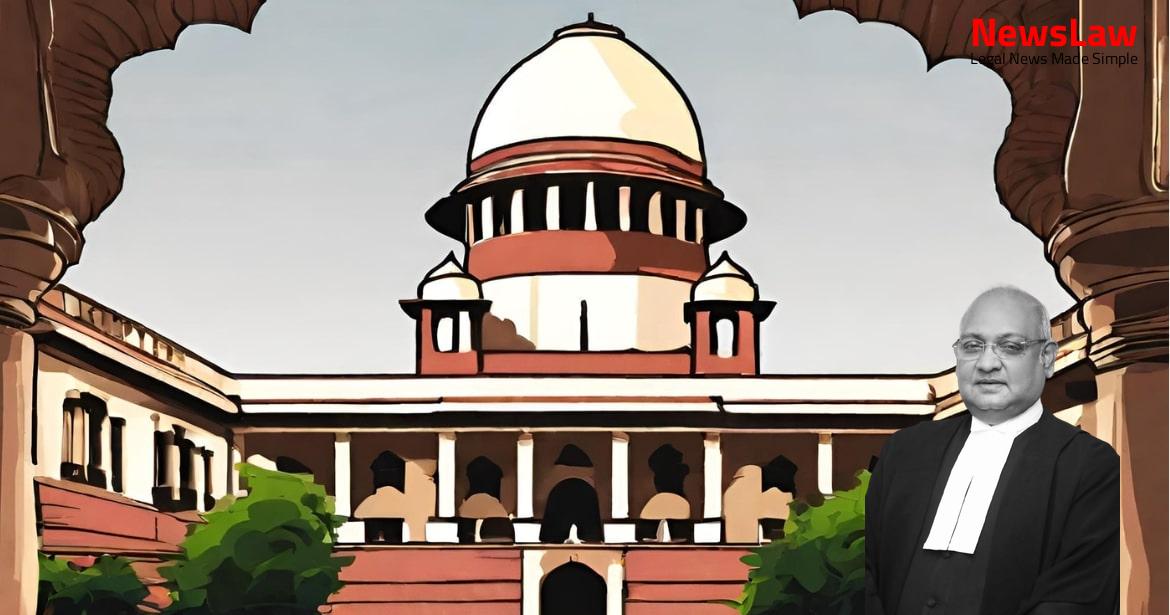The captioned appeal by special leave is directed against the judgment dated 17.10.2012 passed by the Madurai Bench of the Madras High Court in Second Appeal (MD) No 802 of 2004 whereby and whereunder it reversed the concurrent judgments of the courts below decreeing the suit with regard to the title and possession of the entire suit property and confined the plaintiff’s (appellant herein), entitlement to title and possession to 96 cents purchased under Ext. The case of the appellant – (plaintiff) in nut-shell, relevant for the purpose of disposal of the appeal, is as follows :- On 09.08.1918, Vellaiya Thevar executed a mortgage deed for the loan availed from Irulappan, the father of appellant’s vendor- Puliyankaladi, in respect of the suit property having an extent of 2 acres and 61 cents Civil Appeal No 14630 of 2015 comprised in Survey No.845/1 of Thimmanayakanur village in Andipatti Taluk of Madurai District. Puliyankaladi, thereafter executed a mortgage deed of the suit property in favour of Veluchamy and Vellamal. The further case of the defendants was that out of the total extent of the property in Survey No.845/1, 75 cents belonged to Thavasi Andi Thevar, Veluthai Ammal and the first Civil Appeal No 14630 of 2015 defendant, and son of Thavasi Andi Thevar, Veluthai Ammal and the first defendant executed a registered mortgage deed on 14.09.1961 in favour of Pomminayakkanpatti Palaniammal for Rs. Whether the mortgage deed dated 14.9.198 is genuine? Whether the sale deed dated 13.9.1974 is genuine?
Obviously, additional documents were filed by defendants 1 and 3 and received in evidence as Exts. B15, B16 and B17 by the Lower Appellate Court. The core contention of the appellant is that findings of facts concurrently recorded by the Court below are immune from challenge before the High Court in Second Appeal as the First Appellate Court is the final Court on facts. The findings of fact concurrently recorded by the trial court as also by the lower appellate court could not have been legally upset by the High Court in a second appeal under Section 100 CPC unless it was shown that the findings were perverse, being based on no evidence or that on the evidence on record, no reasonable person could have come to that conclusion.” In Yadarao Dajiba Shrawane’s case (supra):- 31. The position is well settled that when the judgment of the final court of fact is based on misinterpretation of documentary evidence or on consideration of inadmissible evidence or ignoring material evidence the High Court in second appeal is entitled to interfere with the judgment. However, it is clear that the legislature has chosen not to qualify the scope of “substantial question of law” by suffixing the words “of general importance” as has been done in many other provisions such as Section 109 of the Code or Article 133(1)(a) of the Constitution. The substantial question of law on which a second appeal shall be heard need not necessarily be a substantial question of law of general importance.
Ram Ditta [AIR 1928 PC 172 : 55 IA], the phrase “substantial question of law” as it was employed in the last clause of the then existing Section 110 CPC (since omitted by the Amendment Act, 1973) came up for consideration and their Lordships held that it Civil Appeal No 14630 of 2015 did not mean a substantial question of general importance but a substantial question of law which was involved in the case as between the parties. On the other hand, if the question was practically covered by the decision of the highest court or if the general principles to be applied in determining the question are well settled and the only question was of applying those principles to the particular facts of the case it would not be a substantial question of law.” and laid down the following test as proper test, for determining whether a question of law raised in the case is substantial: “The proper test for determining whether a question of law raised in the case is substantial would, in our opinion, be whether it is of general public importance or whether it directly and Civil Appeal No 14630 of 2015 substantially affects the rights of the parties and if so whether it is either an open question in the sense that it is not finally settled by this Court or by the Privy Council or by the Federal Court or is not free from difficulty or calls for discussion of alternative views. To be a question of law “involving in the case” there must be first a foundation for it laid in the pleadings and the question should emerge from the sustainable Civil Appeal No 14630 of 2015 findings of fact arrived at by court of facts and it must be necessary to decide that question of law for a just and proper decision of the case. It will, therefore, depend on the facts and circumstance of each case whether a question of law is a substantial one and involved in the case, or not; the paramount overall consideration being the need for striking a judicious balance between the indispensable obligation to do justice at all stages and impelling necessity of avoiding prolongation in the life of any lis.” 14. Whether the courts below have erred in law in casting the burden of proof on the appellants / defendants to prove that the plaintiff is not entitled to the entirety of the suit property in a suit for declaration of title by the plaintiff?” Civil Appeal No 14630 of 2015 17. A scanning of the impugned judgment would reveal the main reasons for such reversal as under:- (i) Exhibit A1, sale deed dated 27.08.1928 (produced as Annexure P1 in this appeal) was executed in favour of Puliyankaladi by the sons of Vellaiya Thevar. (iii) Exhibits A2, A3 & A4 would not estop under Section 110 of the Evidence Act the appellants therein from disputing the title of the respondent therein – plaintiff as what was dealt with under Exhibit A1 is different from what were dealt with under Exhibits A2 to A4. Nainar Pillai’s case (supra) to hold that since Exhibit A1 being a registration copy, the presumption of due execution of the original under Section 90 of the Evidence Act, particularly in the absence of independent witness would not be available. We say so because proper consideration of the provisions under Sections 61, 63, 65, 74, 76, 77 and Section 79 of the Evidence Act would have definitely brought out that it was absolutely unessential to consider the applicability of Section 90 as also Section 110 of the Evidence Act. Cases in which secondary evidence relating to documents may be given.–– Secondary evidence may be given of the existence, condition, or contents of a document in the following cases: –– (a).. Going by Section 76, certified copies of public documents shall be given, on demand, by the public officer having the custody of public document, together with a certificate written at the foot of such copy that it is a true copy of such document or part thereof, as the case may be, and such certificate shall be dated and subscribed by such officer with his name and his official title. – The Court shall presume [to be genuine] every document purporting to be a certificate, certified copy or other document, which is by Law declared to be admissible as evidence of any particular fact, and which purports to be duly certified by any officer [of Civil Appeal No 14630 of 2015 the Central Government or of a State Government, or by any officer [in the State of Jammu and Kashmir] who is duly authorized thereto by the Central Government]: Provided that such document is substantially in the form and purports to be executed in the manner directed by law in that behalf. Civil Appeal No 14630 of 2015 (5) All copies given under this section shall be signed and sealed by the registering officer, and shall be admissible for the purpose of proving the contents of the original documents.” (Underline supplied) 24. Point Nos.8 and 9 as stated above raised by the defendant in this appeal would reveal that he did not dispute the execution of Ext. A1 sale deed No.1209/1928 dated 27.08.1928.
It was contended before the High Court and upheld by the High Court that Ext. A1 is only a registration copy of sale deed No 1209/1928 dated 27.08.1928 of SRO Andipatti, and its original title deed in the name of Puliyankaladi was not marked as an evidence. A5 registered sale deed by Puliyankaladi to the appellant/plaintiff is the same property comprised in Survey No.845/1 of Thimmanayakanur village of Madurai District having an extent of 2 acres and 61 cents as disclosed under the said sale deed. Going by Section 65(e) when the original of a document is a public document within the meaning of Section 74, secondary evidence relating its original viz., as to its existence, condition or contents may be given by producing its certified copy.
When that be the position under the aforesaid provisions, taking note of the fact that the document in question is a registered sale deed, falling within the definition of a public document, the question is whether there exists any law declaring such certified copy of a document as admissible in evidence for the purpose of proving the contents of its original document. In this context it is to be noted that certified copy issued thereunder is not a copy of the original document, but is a copy of the registration entry which is itself a copy of the original and is a public document under Section 74(2) of the Evidence Act and Sub-section (5) thereof, makes it admissible in evidence for proving the contents of its original. When this be the position in the light of the specific Civil Appeal No 14630 of 2015 provisions referred hereinbefore under the Evidence Act and the Registration Act, we have no hesitation to hold that the finding of the High Court that the certified copy of Ext. A1 owing to the failure in production of the original and proving through an independent witness is inadmissible in evidence, is legally unsustainable. A bare perusal of the impugned judgment of the High Court would reveal that virtually, the High Court also, in troth, agreed with the admissibility of Exts.A1 and A5.
If Ext.A1 was not taken as a certified copy admissible for proving the contents of its original and accordingly, taken the contents of its original as proved where is the question of accepting Ext. A1 sale deed creating title to Puliyankaladi to sell the property covered thereunder to the plaintiff under Ext. A5 sale deed, as held in paragraph 14 of the impugned judgement. Now a perusal of the impugned judgment would reveal that the High Court held that the Ext. A1 would not cover the entire extent of 2 acres and 61 cents comprised in Survey No.845/1 of Thimmanayakanur village in Andipatti Taluk of Madurai District. 845/1 having an extent of 2 acres and 61 cents along with 3/5 share of well and other plants standing in its four boundaries would not and could not be taken as something which would reduce the actual extent of the property under transaction i.e., 2 acres and 61 cents comprised within the boundaries mentioned thereunder.
Hence, once Ext. A5 was held as valid and in existence there can be no reason to confine the title passed thereunder to 96 cents when based on Exts. A1 and A5 courts below held that the appellant/plaintiff is entitled to title and possession over the entire extent. Taking note of the fact that Ext.A5 was registered on 15.07.1963 the courts below considered the question(s) relating their evidentiary value and whether they could outweigh the evidence on the part of the appellant/plaintiff, in extenso. The trial Court, therefore, rightly held that the oral and documentary evidence of the appellant/plaintiff clearly established that till 1959 the suit property belonged to Puliyankaladi and thereafter, the appellant/plaintiff purchased the property from Puliyankaladi as per Ext. A5, in the circumstances mentioned thereunder.
The upshot of the discussion is that the High Cout in exercise of the power under Section 100 CPC, ought not have interfered with the findings of the trial Court judgment and decree of the trial Court which were confirmed by the First Appellate Court.
Case Title: Appaiya Vs. Andimuthu@ Thangapandi & Ors.
Case Number: Civil Appeal No. 14630 of 2015 (@ SLP (C) No.10013 of 2015) (2023INSC835)



